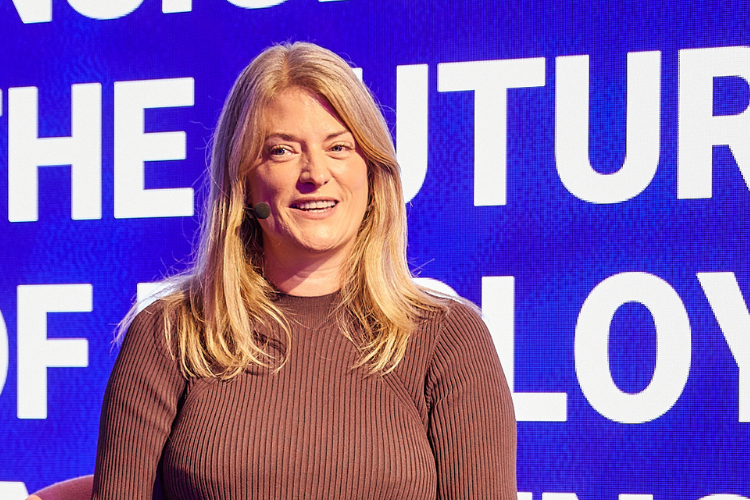Why Marginals Boost Corporate Culture and Performance
The U.K. doesn’t understand fresh fish.
At least, that’s what one Japanese manager thought during her visit to Tesco’s U.K. locations, organized in response to the company’s faltering domestic sales. After the world’s third-largest food retailer lost 14-year veteran CEO Terry Leahy to retirement in 2011, its profits slipped for the first time in decades.
Yet its Asian subsidiaries remained successful. Later that year, Philip Clarke took the helm, intending to discover what differentiated the Asian stores from those in the U.K.
The organization brought in leaders from Tesco’s Asian subsidiaries to teach and help innovate in the U.K. The initiative was developed with the help of Mary Yoko Brannen, a professor at the University of Victoria’s Gustavson School of Business in British Columbia, Canada. It revolved around the concept of “marginals,” or individuals who are simultaneously cultural insiders and outsiders.
Marginals fit into a broad picture of cultural belonging, defined by Brannen using five typologies (see sidebar). Marginals tend to be biculturals—meaning they identify with two cultures, often with a feeling of internal conflict depending on context.
The term captures a sense of existing at the perimeter of belonging, but remaining, to some degree, excluded from it. Blond-haired and blue-eyed, Brannen herself grew up a marginal in her native Japan. Contrast marginals to “bridger” types, or cultural chameleons—biculturals who don’t experience internal conflict or individuals who have crossed cultures so often they don’t regard culture as a barrier.
Marginals’ lifelong experience inside a cultural or contextual tug-of-war means they’re keenly attuned to the contexts in which they operate. They tend to possess higher perceptual acuity and higher cultural metacognition than their non-marginal or bridger peers. As employees, marginals use those skills to open up opportunities at companies often otherwise ignored or missed.
REVEALING OPPORTUNITIES
Over the course of three months, Tesco’s Japanese managers were marginals in the context of Tesco U.K.: insiders because they were established within Tesco as an enterprise, but outsiders because, being Japanese, they were culturally different from most of their U.K. counterparts and unfamiliar with the cultural norms that drove Tesco U.K.’s processes. As the managers observed Tesco’s operations, they offered insights into operational shortfalls and possibilities for innovation.
“We brought in nine managers who were at level three or four in the organization—there were five levels total—and we trained them how to be inside/outside ethnographers [those who study people and cultures] at Tesco U.K.,” Brannen says. The goal was to update Tesco’s sense of its own standards and processes through the lens of its Asian subsidiaries.
Brannen recalls a manager from Japan observing one of the London stores, which was opening a new fresh fish section.
“She was really excited because fresh fish is a big deal in Japan,” Brannen says. The visiting manager watched the fishmonger open his department, and after a while, approached him and asked about his training.
The worker replied that he had previously worked in groceries and had been assigned to the fish section the week before. He’d been given only a few hours of training.
“She was horrified because in Japan, you have to apprentice for over a year to cut fish,” Brannen says. “Her assumption then was, ‘Well, I guess the Brits don’t really care about how their fish is cut.’ But if you have Asian customers, they’ll expect higher quality.”
That observation alone wouldn’t instantly improve profit margin on the fish itself—though proper training could reduce waste. But it provided Tesco with a new perspective.
Amid complaints about poor service and quality, Tesco’s marginal managers revealed an opportunity to improve the U.K. stores’ processes and training programs—which would likely have gone unnoticed.
Another of Tesco’s promises was that customers would always be at the heart of business decisions. But to the Asian managers, that didn’t appear to be the case.
“In the U.K., the priority was competing on KPIs,” Brannen says. Managers who would have started their day on the shop floor were more worried about meeting KPIs than meeting customer needs.
In many Asian countries, Brannen explains, it’s not an option to allow the “customer at the heart” promise to slip. In Japan, competition for customers is fierce. Stores can’t make their primary focus competing on price—especially if it sacrifices customer service.
Tesco’s U.K. leadership began to rethink the balance between efficiency and the customer experience.

LEARNING FROM DIFFERENCES
Brannen’s project validated Tesco’s decision to better understand how marginals could bridge and integrate knowledge across the organization, improving corporate culture and performance.
First, the company would value managers with deep knowledge of local contexts. Second, it would support multidirectional flows of knowledge to and from the company’s headquarters and its subsidiaries. Third, it would build corporate advantage by “re-contexting” local practices using inside-outside knowledge from marginals. This last point, Brannen notes, is often the most valuable in creating a company’s competitive advantage.
Still, Tesco remains troubled amid declining sales and botched revenue reporting, and it now has a new CEO. Brannen attributes the company’s continuing problems to increasing price-based competition, “isomorphism of practices” (meaning that other grocery stores also began offering benefits such as club cards and discount pricing to become more competitive), and what she calls a “crisis of leadership and vision” in the executive team.
Though the project did not produce breakthrough results, it did provide a stepping-stone for the company to take a closer look at its own operations. Marginals’ insights comprise a piece of the larger puzzle as Tesco continues to reinvent itself in a dynamic, increasingly diverse business environment.
MARGINALS AS LEADERS
Despite their value, marginals are not always immediately pegged as leaders—especially by the largely monocultural C-suite. Monoculturalism among executives is a global problem Share on X, as minorities make up only 4 percent of Fortune 500 CEOs.
The numbers are staggering: McKinsey reports that 97 percent of U.S. senior leadership teams do not reflect the demographic composition of the country’s labor force and population. Executive teams in the U.K. fare slightly better at 78 percent.
This is counterproductive, especially given that diversity also leads to tangible bottom-line results: Ethnically and racially diverse companies are 35 percent more likely to outperform their non-diverse competitors, McKinsey reports.
Despite their value, marginals are not always immediately pegged as leaders—especially by the largely monocultural C-suite.
But under the umbrella of ethnic diversity or biculturalism, there is an important distinction between marginals and bridger types.
Global cosmopolitans, one of the two primary bridger types, have crossed cultures so often they don’t see culture as an issue in the workplace. In Brannen’s research, global cosmopolitans ranked higher on cultural adaptability.
For instance, they could move seamlessly from Silicon Valley to an office in Singapore, unperturbed by street signs in a foreign language. Global cosmopolitans, switching between contexts with ease, “feel that in organizations, the best way to lead will be uniform throughout the world—so cultural differences become leveled at a certain stage of efficiency,” Brannen says.
As a result, global cosmopolitans focus on what they understand as similarities across cultures instead of differences. Though that single-mindedness helps get the job done regardless of context, their approach might be akin to a steamroller instead of a more intentional chiseling away.
The same can be said of monoculturals, who can be tone-deaf to subtle cultural differences.
That’s where marginals demonstrate their value. “Because they’ve never been able to fit in, marginals see differences in context,” Brannen says. They adopt a “stop, assess, then react” approach that depends on each situation. They notice and address cultural complexities, a valuable trait to bridging global teams.
AN EARLY OBSERVATION
Brannen points to a study she led earlier in her career while at the University of Michigan that encapsulates those differences. Her ethnographers interviewed daycare teachers in large U.S. cities where bicultural children were common. She found that when daycare providers wanted to know what had gone on while they had stepped out of the classroom, they would always ask a marginal.
“The student would be a Vietnamese-American or someone who recently came to the country. That’s because the marginal sits, watches and tries to understand the context before they act,” Brannen says, adding that a child’s understanding of his or her cultural identity determines the skill sets he or she will bring to an organization later in life. “Johnny Monocultural has just been playing on his drum the whole time, not noticing what’s going on in the context.”
Added to marginals’ strength of perceptual acuity is cognitive complexity. In many fast-paced, quick-to-market global organizations, in which teams are working together overseas, navigating cultural complexities is highly valuable. Marginals tend to flourish here.
“In terms of global leadership issues, they’re very competent, especially with handling uncertainty,” Brannen says. “Because they have high levels of flexibility, marginals can answer the diversity and the innovation challenge in organizations.”



